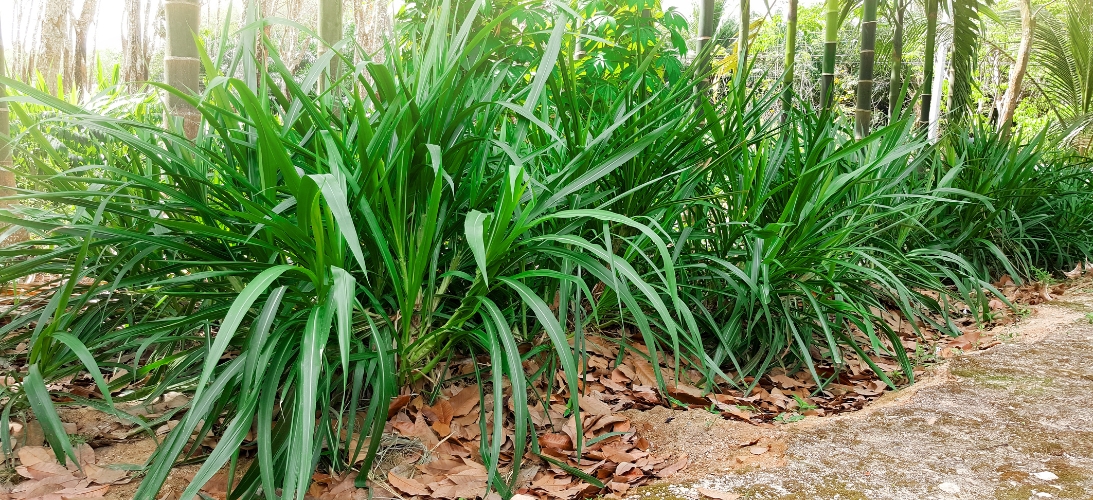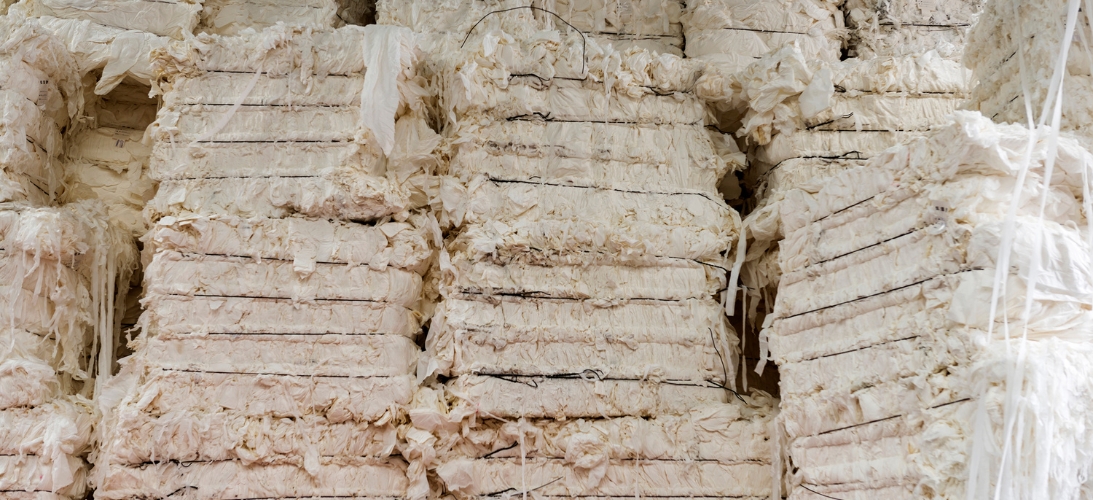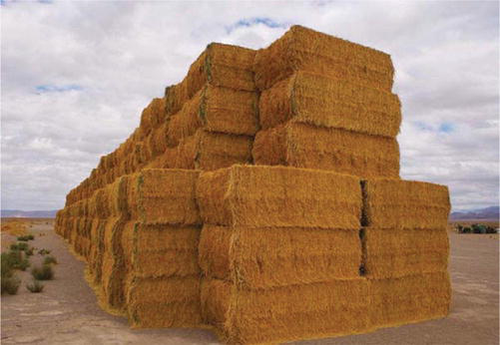Are Next-Generation Fibers The Future of Sustainable Paper?
Posted on Nov 4th 2021
The Future is Next-Generation Fibers
In 2021, EcoEnclose signed a procurement policy with Canopy Pack4Good.
Canopy is an incredible organization “that protects the world’s forests, species, and climate by working hand in hand with companies from around the globe to transform unsustainable supply chains, catalyze innovative Next Generation Solutions, help advance frontline community rights, and conserve vital forest ecosystems all over the world.”
EcoEnclose has always focused on maximizing recycled content across our packaging solutions, including our paper mailers, boxes, and void fill. After becoming a Pack4Good policyholder, EcoEnclose began our journey into next-generation paper.
Next-gen paper has become an even more urgent priority for us at EcoEnclose. Over the past year, many more brands have reached out to us, looking to move from plastic packaging to paper. We love seeing this commitment to more renewable, more readily recycled packaging material. However, we have also been struck by how often brands leap from plastic to virgin paper, not realizing that this swap could damage the planet more than the plastic being replaced.
Because of these experiences and reflections, we released a white paper; All Paper Isn’t Equal: How A Virgin Paper Strategy Falls Short. In it, we describe why we are so committed to helping brands transition to paper mailers in a way that does justice to the positive environmental impact these companies want to have. Specifically, this means working with brands to (1) use recycled paper content wherever feasible, minimizing the need for virgin paper inputs; (2) work together to spur next-gen fiber innovation so that we have a far more diverse fiber basket long-term; and (3) avoid any wood fiber that has potential to be derived from primary forests.
Why Do We Need Next-Gen Fibers?
Industry and lobbying groups representing logging, pulping, and paper worldwide are highly effective and powerful. They have acquired vast acreages of primary forest, lobbied heavily for laws that protect their rights to cut down trees in these areas, and lobbied aggressively against any legislation that holds them accountable to the environment. Most concerningly, they have effectively marketed a false message that “trees are a virtuous and perfect input into our single-use paper packaging.” Their efforts have been so successful that entities from EU lawmakers to Trayak’s LCA software have adopted a perspective and approach that is - whether on purpose or not - incredibly “pro-logging stance.”
Woodchips are now generally considered a renewable and carbon-neutral energy source, with the assumption that the cutting down of a tree is a carbon-neutral exercise. The perspective is that in 100 years, the tree can be regrown and recapture all of the carbon lost. This assumption is heavily contested by scientists and the environmental community (of which we include ourselves), who argue that cutting down a 500-year-old tree in a primary forest and replacing it with a monocrop tree not only releases far more carbon than can be recaptured in 100 years but also has devastating consequences to the complex ecosystem of our intact forests.

However, for over 100 years, the strength of these industry associations and lobbying groups has led to trees now accounting for 97%+ of our fiber basket, although paper and fabric can just as easily come from other sources - hemp, bamboo, agricultural waste, and more (source). We seek to change this reality with our commitment to next-gen fibers, which would help diversify the fiber basket of inputs that goes into the world’s pulp and paper supply well beyond trees.
A healthy mix of fibers for paper would ideally include recycled content, agricultural waste (that would often otherwise be burned), certified sustainable trees that do not come from ancient or endangered forests, or any other controlled or controversial sources. According to Canopy, when it comes to natural fibers, companies should seek out the following (in order of sustainability priority):
- Post-consumer waste (processed chlorine-free)
- Post-industrial waste (processed chlorine-free)
- Next-gen fibers (virgin paper made with agricultural waste, ideally from agricultural products that were produced responsibly)
- FSC® certified wood that is not pulled from ancient and endangered forests, paper with no controlled wood content or controversial sourcing
- [Avoid] Non certified trees, wood that is not pulled from ancient and endangered forests, paper with no controlled wood content or controversial sourcing
- [Avoid] Non-certified trees, no transparency into the supply chain. It may come from intact, endangered, or high-conservation forests.
Check out Canopy's Paper Steps for more detail.
What Are Next-Generation Fibers?
EcoEnclose considers next-generation fibers to be derived from waste. Typically, this is agricultural waste, such as wheat straw and flax straw, which are left behind after these crops are harvested. However, not all next-generation fibers are created equal. Emerging companies are converting novel waste products, such as fallen leaves and algae waste, into paper.
EcoEnclose prioritizes next-generation fibers whose primary purpose was food production, whose production is not excessively damaging to the environment and that would otherwise be burned or put to a much lesser value use. With this lens, wheat straw and hemp waste are promising. In contrast, bagasse is less exciting, largely because of sugarcane's resource-intensive and highly polluting production methods (from which it is derived).
Other crops, such as bamboo and miscanthus (elephant grass), make beautiful paper but are not considered “next generation.” However, because these are carbon-fixing, low-water crops, they are interesting “on purpose” crop additions to the paper fiber basket.

Check out our blog post: Sourcing The Most Sustainable Paper, for a more in-depth analysis that prioritizes paper sources in detail.
There are a lot of wins associated with next-generation fibers! For example, trees don’t need to be cut down to make paper (reducing pressure on intact forests). Burned waste that releases carbon and creates terrible air quality can go into a usable product instead. Life cycle analyses show that using agricultural residues can result in a 75% to 90% reduction of the carbon, water, and biodiversity footprint compared to products made from wood fiber.
Is Recycled Better Than Next-Gen? How Does Non-Tree Paper Create a More Sustainable Future?
EcoEnclose is on a mission to build a future of true packaging circularity in which all packaging is reused and then recycled back into itself. Any virgin inputs needed for packaging are produced in net neutral or, ideally, regenerative ways.
To support this vision, we have invested heavily in maximizing recycled content levels across our packaging solutions, with a particular focus on post-consumer waste. This strategy serves as a pull by incentivizing players across the recycling and packaging supply chain to improve their ability and capacity to handle recycled content. This pull is key to making progress towards materials circularity.
Even as we’ve committed to recycled content, we recognize that the broader paper and packaging industry needs to embrace next-generation fibers for all the reasons described above.

Ideally, next-gen and other responsibly grown non-tree fibers would replace paper and packaging deemed to require long-fiber inputs (the kind typically derived from softwood trees). Because recycling paper shortens its fiber lengths, it is generally not as strong as virgin softwood paper. However, in certain limited use cases, a brand may find that they genuinely need longer fiber lengths than they can achieve with recycled paper. For example, our glassine bags are currently made with FSC-certified virgin paper because, with today’s technology, the supercalendering process can only create a smooth, translucent glassine finish when using long fiber paper. Additionally, our GreenWrap is made with virgin FSC-certified paper. In this scenario, the paper requires high tensile strength for the honeycomb to expand without tearing.
We hope that long-term, next-generation fibers can replace virgin tree-based paper options in scenarios like these.
However, the current technology and worldwide capacity to pulp different agricultural waste inputs are still nascent. Therefore, we recognize that brands, manufacturers, and converters need to make conscious investments in these fibers to fuel the costly infrastructure investments required in next-generation fiber pulping operations.
Additionally, some of the most readily available ag waste products today (such as wheat straw) have relatively short fiber lengths, making them difficult substitutes where the long fiber strength characteristics of virgin tree paper are needed. Other crops (such as hemp) have very long fibers; however, these crops are not yet abundant in the US or are extremely expensive to secure and process.
So, to achieve our long-term vision of having next-generation fibers be more readily swapped in when long fiber virgin inputs are needed, we need to start somewhere much smaller. For us, this means finding every opportunity to bring an excellent next-generation fiber into the market, to help bring demand to the pulpers and mills working in this nascent space, and to spur more market understanding and demand for these innovations.
What Is EcoEnclose Doing In This Space?
In 2021, EcoEnclose launched a limited-time offering of Wheat Straw Packaging Paper made with 20% wheat straw and 80% recycled content. This product launch marked the beginning of many EcoEnclose packaging solutions in which responsibly grown next-gen fibers are used anytime recycled content will not suffice, and the strength of virgin paper is needed.
In September 2022, EcoEnclose launched a limited run of Wheat Straw Kraft Bag & Seals, a more sustainable polybag alternative. We have made these available to enterprise brands looking to pilot this innovative poly bag replacement across their complex, global supply chains.
We are actively working on various next-generation paper packaging solutions, ranging from hemp waste retail cartons to flax and rice waste paper mailers. If you’re interested in partnering with us on next-gen innovations in the future, contact saloni@ecoenclose.com!
Finally, we encourage you to check out Canopy Pack4Good. Learn more about how they work with brands and manufacturers and if it makes sense for your company to get involved.


